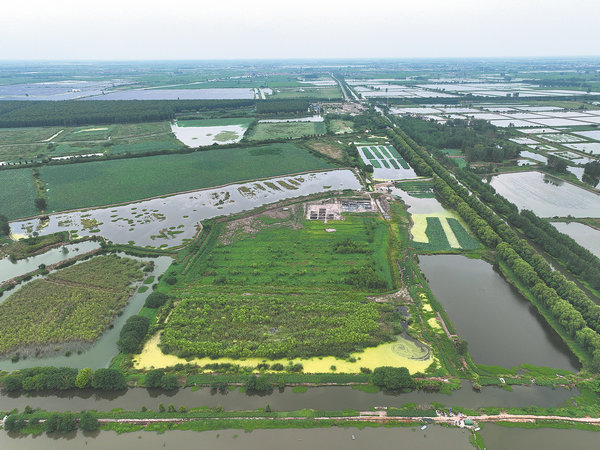

An underwater Neolithic discovery unveiled buried facts of daily subsistence and environmental adaptation several thousand years ago, the National Cultural Heritage Administration revealed on Sept 13.
Covering 80,000 square meters, the Caoyangang Site in Xinghua, Jiangsu province, has been confirmed as a Neolithic site dating back 7,200 to 6,900 years. It is now under a pond covered by a natural sediment layer of nearly 2 meters.
The special water-saturated environment has allowed the preservation of many organic relics, including wooden architectural components, plants and seeds, animal bones and even fossilized excrement.
Other significant finds include more than 200 house foundations, fences, refuse pits and ditches, wells and over 2,800 pottery, bone, stone, wood, jade and clamshell artifacts.
Gan Huiyuan, a researcher with the Jiangsu Provincial Institute of Cultural Relics and Archaeology, says they have discovered 151 refuse pits, with more than half paved with wood at the bottom with traces of sunmao (mortise-and-tenon) joints. Therefore, they are believed to be wooden architectural components.
"The pits are distributed in a relatively concentrated way but lack a clear layout pattern. ... Archaeological studies uncover that they were made at the same time, shortly before the abandonment of the site. This may suggest some collective behavior of the ancient people before their migration, like sacrifices, for example," says Gan.